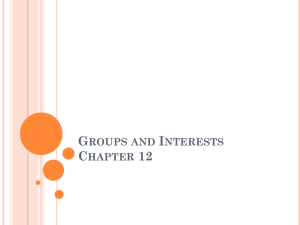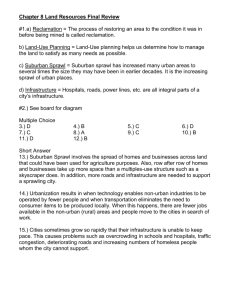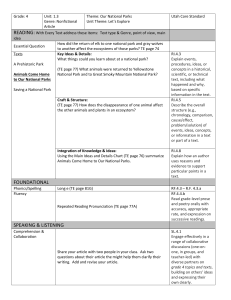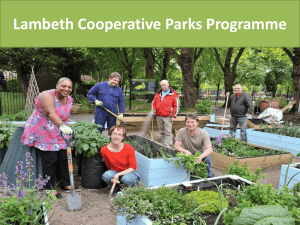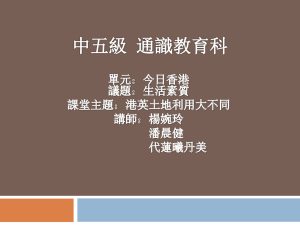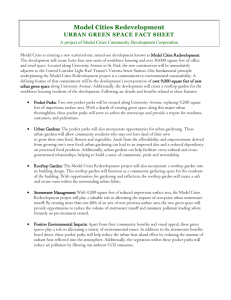Notes from Charlotte Presentation
advertisement
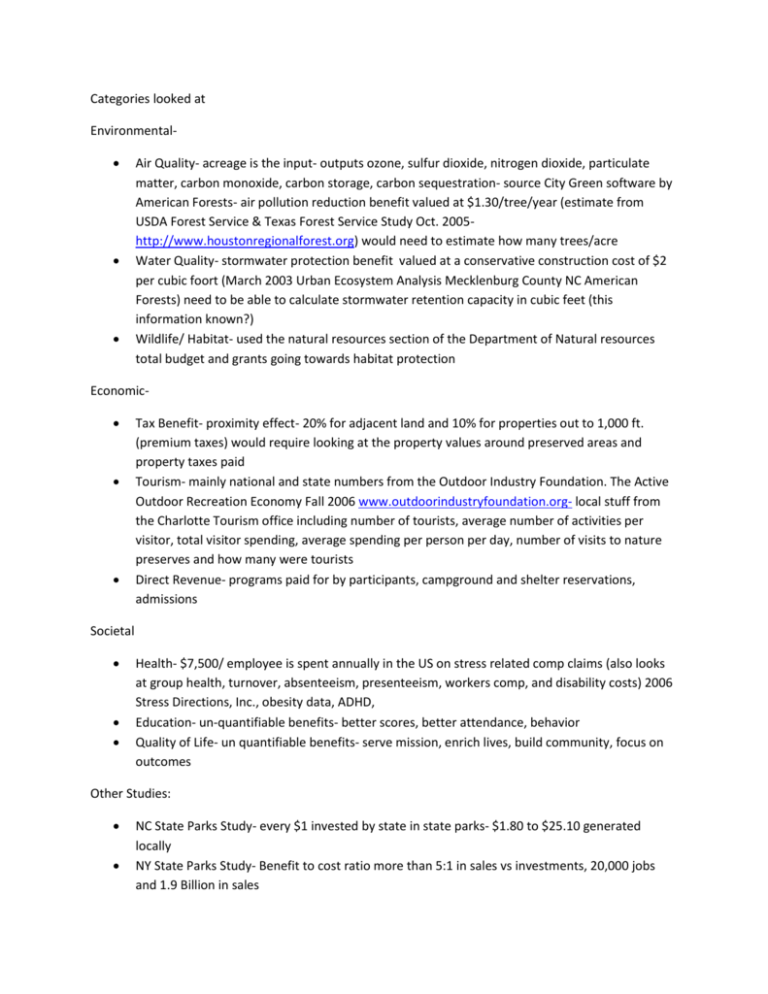
Categories looked at Environmental Air Quality- acreage is the input- outputs ozone, sulfur dioxide, nitrogen dioxide, particulate matter, carbon monoxide, carbon storage, carbon sequestration- source City Green software by American Forests- air pollution reduction benefit valued at $1.30/tree/year (estimate from USDA Forest Service & Texas Forest Service Study Oct. 2005http://www.houstonregionalforest.org) would need to estimate how many trees/acre Water Quality- stormwater protection benefit valued at a conservative construction cost of $2 per cubic foort (March 2003 Urban Ecosystem Analysis Mecklenburg County NC American Forests) need to be able to calculate stormwater retention capacity in cubic feet (this information known?) Wildlife/ Habitat- used the natural resources section of the Department of Natural resources total budget and grants going towards habitat protection Economic Tax Benefit- proximity effect- 20% for adjacent land and 10% for properties out to 1,000 ft. (premium taxes) would require looking at the property values around preserved areas and property taxes paid Tourism- mainly national and state numbers from the Outdoor Industry Foundation. The Active Outdoor Recreation Economy Fall 2006 www.outdoorindustryfoundation.org- local stuff from the Charlotte Tourism office including number of tourists, average number of activities per visitor, total visitor spending, average spending per person per day, number of visits to nature preserves and how many were tourists Direct Revenue- programs paid for by participants, campground and shelter reservations, admissions Societal Health- $7,500/ employee is spent annually in the US on stress related comp claims (also looks at group health, turnover, absenteeism, presenteeism, workers comp, and disability costs) 2006 Stress Directions, Inc., obesity data, ADHD, Education- un-quantifiable benefits- better scores, better attendance, behavior Quality of Life- un quantifiable benefits- serve mission, enrich lives, build community, focus on outcomes Other Studies: NC State Parks Study- every $1 invested by state in state parks- $1.80 to $25.10 generated locally NY State Parks Study- Benefit to cost ratio more than 5:1 in sales vs investments, 20,000 jobs and 1.9 Billion in sales City of Philadelphia- $23 M proximity effect and tourism, $16 M in cost savings, $1 B in direct use value/ savings, $69 M health benefits- value = 100 X spent on parks Development does not pay for self- every $1 in residential property tax generates $1.17-1.30 in public services Other notes- really need to look at land cover maps/ development – very effective in a presentation, look at the investment in and the return value also effective
